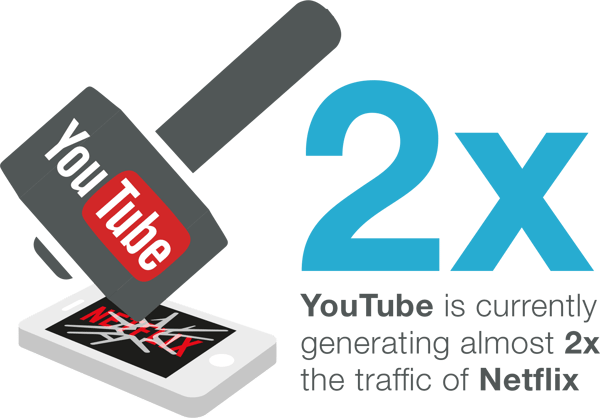Since the pandemic started, I have been deluged with inbound requests for updates on what has happened to video traffic during the shutdowns. Up until now, there has not really been an impact on the volume of video traffic overall, with one exception in a shift of content preferences. For the first time that I have seen in the Global Data, YouTube is above Netflix in the rankings, and sometimes by as much as twice the volume.
YouTube is always number one on mobile networks, usually by quite some margin. So why would it pass Netflix during this crisis? Well, the answer is actually one that makes a ton of sense from my perspective. People are watching a bit more YouTube than normal (because it is a great source of information from a wide variety of sources) to try and figure out what is actually going on and to learn about what they should be doing. And unlike normal, where their usage is divided between mobile networks, work, or school networks, and random WiFi hotspots, it is all centered on home networks. And consumer fixed-line environments are the dominant bandwidth contributor to the Global Report because of the sheer capacity of a fiber network versus a mobile or WiFi or satellite network.
So what we have during this (hopefully) once in a lifetime event is a massive example of place shifting. Rather than being distributed among many different locations, users are concentrated on a single network – it is equivalent to all highways but one being closed, and all traffic being routed through that street.
Today, I will start the exploration with the simple observation from above.

The Global Internet Phenomena Report is focused on consumer broadband networks as our main source of data. This specific event leads me to believe that if we had a broader view across enterprise, public WiFi, education, and even more mobile networks, YouTube would likely pass Netflix as the top single source of traffic on the internet. In many cases, YouTube is not just greater than Netflix, it is 2x the volume of Netflix, which is a massive statement of dominance.
Tomorrow I will delve a bit further into how this event has changed the hourly patterns on networks – for example, what is the shift in video consumption during peak news hours? Is Disney+ benefiting from releasing Frozen 2 early? What hours has Netflix grown as people binge watch during work hours?
Topics: Featured Blog Header, Netflix, YouTube, Global Internet Phenomena, covid-19





